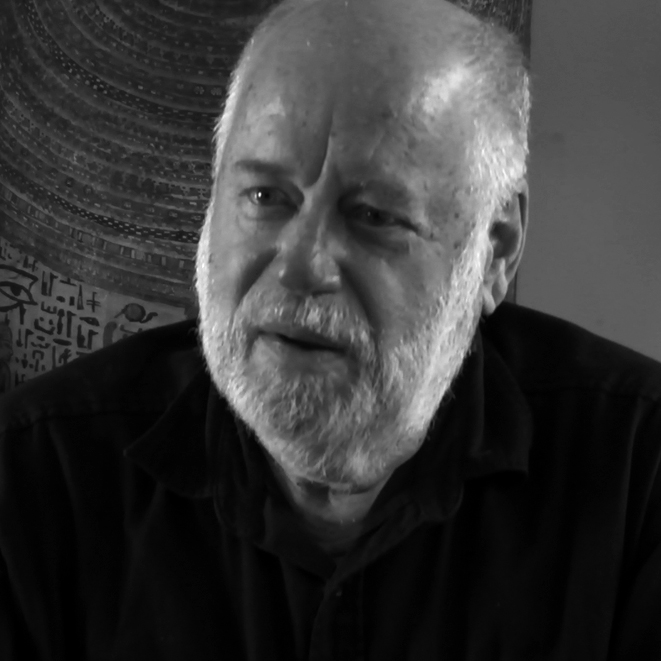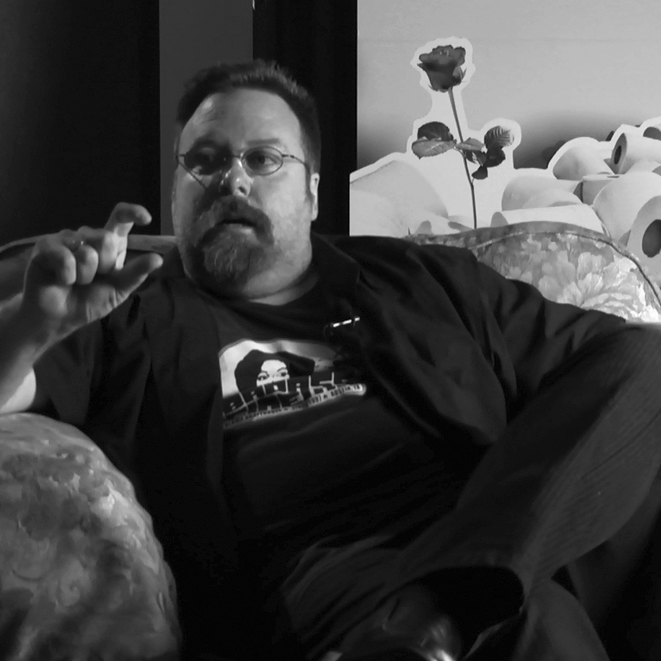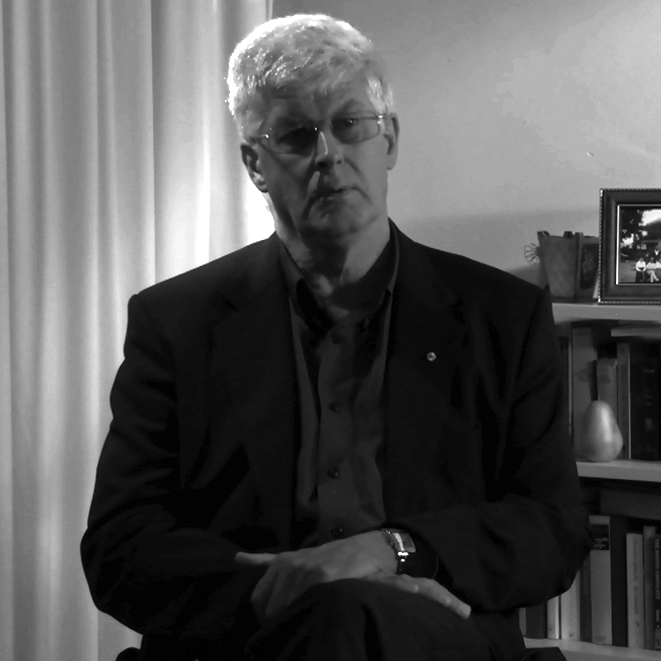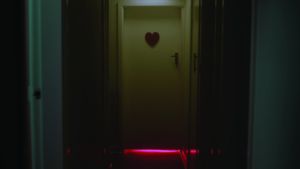Since seeing Andrew Scarano and Phil Hignett’s documentary on the state of the Australian film industry, Into the Shadows (Andrew Scarano, 2009), I’ve been thinking about the way we in the industry frame the battle faced by local filmmakers and distributors. The film tracks the demise of arthouse cinemas in Australia and goes hunting for reasons why this happened and why audiences shy away from homegrown films. An animated sequence early in the documentary shows a stickman filmmaker looking for the connections between filmmaking and exhibition. He discovers that fat controllers called distributors fill this space and prevent filmmakers’ direct access to their holy grail: a cinema season. These wealthy gatekeepers usher the American, the French and the British producers through the door called exhibition, but slam it in the face of the hapless Aussie.
So, do Australian audiences stay away from homegrown films because of distributors? It sounds too glib to be entirely true. Scratching around for a suitable metaphor for the industry I have been immersed in for over thirty years – a fresh way of explaining what seems to me to be the pressing issues in the film industry – I’m going to draw on the humble restaurant. In this metaphor, the kitchen is distribution, where films are decorated with slogans and one-line tags, trailers, posters and websites. Then, a staff of sharpies and publicists whisk the work out to a waiting public, hungry for what has been promised: nourishment and pleasure.
A successful dish can become famous almost overnight and the cinema owner, like a proud maître d’, becomes very protective lest other restaurants get hold of his secret. Before all that happens, there is a producer, often mired in debt, limping from one crop to the next, nursing his animals from birth, fattening them up for consumption. He is subject to the vagaries of the weather and government subsidy but remains tied to his great love, the stories that inspire him, never considering that those awaiting his produce, in restaurants everywhere, might have some valuable input.
The story told by Into the Shadows confirms the metaphor: just as the rise of fast-food outlets puts a variety of local restaurants out of business and the public lose their taste for good food, so the rise of multiplex cinemas has put local arthouse cinemas out of business and the public forget that films can be different from what’s offered each week at the popcorn palaces.
The fat controllers have choked supply to the arthouse cinemas.
In any other industry this would be illegal, but because of historical precedent the film business is different. Think Chicago in the 1920s: Al Capone, the Mob, threats and offers you can’t refuse. As the ex-owner of Melbourne’s Lumière Cinema, Paul Coulter, explains:
We needed just one or two films each year to become hits for us to earn enough to cover our losses on some of the others; and in the end, we were denied those films.

Antonio Zeccola, from Palace Cinemas, remembers going down to the distributors’ vault and begging for this or that film. Despite the potentially decent returns, the exhibitor’s market position meant that he was refused. The Lumière, the Longford, and the Carlton Movie House in Melbourne; Electric Shadows in Canberra; and the Mandolin, the Chauvel and the Valhalla in Sydney were all once vibrant businesses whose success with arthouse films caused the big end of town to take notice and to suddenly ‘want it all’, as Coulter says. Suddenly those arthouse films were playing mainstream and the writing was on the wall. Once the arthouse pioneers were out of the way, the multiplexes lost the plot and fell back on their tried and true: the action pictures, romance and adventure. They never really had the stomach for art, and just as chicken from a fast-food joint is hardly coq au vin in a tiny Paris restaurant, so the audience either got hooked on the sugar of weekly melodramas at the multiplex or stayed home in disgust and read a book.
In other cities, in other countries, it has not turned out this way. In Paris, the single-screen cinema scene is alive and well, offering a smorgasbord of cinema treats each week to a discerning audience. In Australia, cultural prosperity just isn’t high enough on the agenda. We have the world’s best quarantine arrangements and a strict pharmaceutical testing regime, we defend ourselves with submarines, battleships and fighter planes worth billions, but our growing, vulnerable, fragile culture remains open slather.
The arrival of American distributors early last century stopped our thriving film industry in its tracks. They threatened local cinemas and choked supply if exhibitors refused to stop showing Australian films. The voices of opposition were faint then, and they’re even fainter now. As Phillip Adams says in Into the Shadows:
If you don’t have this defence mechanism of your own culture … you may find yourself with a prime minister who attaches himself to the posterior of an American president and just keeps saying, ‘Yes, let’s do what you do, let’s have a war.’

My own work in the distribution kitchen these last eighteen years has seen the attrition in arthouse cinemas impact severely on business. Unlike the fat controllers who dictate the supply of ‘product’ to the multiplexes, we independent distributors are victims of this demise because these exhibitors were our portal. I would get a call late at night from Alex Meskovic, who ran the Mandolin, or Chris Kiely, from the Valhalla in Glebe, and in hushed and excited voices they would give me a tip, always urging me to ‘get in quick before the bastards beat you to it!’ We worked like bookies at the track, looking for the long odds, the interesting horse with the right jockey. Mostly it worked, and in this way we brought new directors’ work to Australian audiences, who lapped it up.
Where once the exhibitor would champion a film of mine, nurture it, even share my advertising costs and do their own publicity, I now find I’m on my own – responsible for all the costs, publicity and ideas.
Where once I could preview a film to several close friends in exhibition, get a quick thumbs up, negotiate a contract with the producer or sales agent, and have it booked into five or six cinemas with speed and ease, I now find my films command no guarantees from cinemas. Instead they are put on hold for months waiting for a commitment, and then they have to compete for sessions with films backed by staggering marketing funds. The asymmetry is breathtaking and vertiginous. Where once the exhibitor would champion a film of mine, nurture it, even share my advertising costs and do their own publicity, I now find I’m on my own – responsible for all the costs, publicity and ideas. If one film fails, the debt is crippling.
Yet arthouse films from the handful of visionary distributors were never going to be enough to sustain these ‘sacred temples’, as a former director of the National Film and Sound Archive in Canberra, Paolo Cherchi Usai, calls them. This description means something to me and to many who suffered in the subsequent fallout from their closure. The disappearance of the arthouse exhibitors, whose personal care of a new film was heroic, has taken with it their flare and showmanship. They would call the critics in, feed them, give them drinks, butter them up, show them the film and even fax me the reviews. On opening night, there was often a bottle of champagne and a meal shared with the visiting filmmaker while the film was playing to a packed house. These guests were always delighted to see that, in Australia, we cared.
In all this debris, to me the greatest loss is access. As a distributor, access to the ear of trusted exhibitors was vital, but access to cinemas as places of activism, philosophical discussion and political debate is the greater loss. I well remember, after screening yet another documentary on East Timor in the 1980s at the Valhalla, how Agio Pereira (now an advisor to Prime Minister Xanana Gusmão) would thank us for the work we were doing, calling the Valhalla ‘a Timorese-liberated zone’.
This effect of cinema to inspire and invigorate has been lost. Some called it the ‘halo effect’ – a combination of social capital and ideas that brings out the angel in each audience member. Impossible to quantify, the accumulation of this effect played a real part in the liberation of East Timor (as one example), and convinces me that films can change the world.

In past days, the arthouse exhibitor worked the front of house like a proud restaurateur. His audience stayed as long as they wanted; his guest speakers were treated with great respect while audiences tolerated ratbags and orators alike, so the cinema became part theatre, part speaker’s corner and part social space, created by a consensus that this kind of place was indeed a ‘sacred temple’. In the multiplexes that have replaced most of this, schedules must be adhered to and the shadowy exhibitor nervously watches ticket sales while the public face of the cinema is the ticket-ripper.
There is still some hope. As veteran producer Anthony Buckley says in Into the Shadows:
Cinema has died before. It died when television came in, it died again when VHS tapes came in, and it died again when SBS got started showing foreign language films.
Cinema seems to be a cat with nine lives, and since this documentary was made we now see independent cinema emerging again in different, more interesting and devious forms.
In Melbourne, Rooftop Cinema is one example, and then there’s Underground Cinema screening films in secret locations and Speakeasy Cinema springing up in the bars of that ever-changing, culture-prone city. To me these developments are far more interesting than movies I can download to my computer or watch on my mobile phone, for they offer us something deeply embedded in our collective unconscious: the social capital we make together when compelling stories are told in the dark.
This fundamental community spirit means the re-emergence of single-screen cinema should come as no surprise. In evolutionary terms, the development of the multiplex cinema, with its industrial model and its need to capture every last cent of the cinema dollar, will eventually be seen as a dodo. While they may survive, just as fast-food restaurants survive, they will never be able to offer that essential ingredient of the cinema experience, identified again and again in Into the Shadows: showmanship.

So the growth of the multiplex cinema will eventually be arrested (if it hasn’t already started to slide). New forms of cinema can see that end, and all that stands between them and success is the films they will be offered to show. That leads to the final chapter of Into the Shadows, which asks: why aren’t we making better films? The explanation so far of what’s wrong with the cinema industry (distribution and exhibition) is only part of the story. Why do Australian films make up such a small percentage of what’s on offer? In France the percentage of French films in the mix of all the films on offer in cinemas (in 2008) was around thirty-seven per cent. In Australia it was about four per cent. I would venture that (despite our unfathomable predilection for American films) the same ineptitude towards audiences shown by multiplex culture exists within the Australian production sector.
The Jammed (Dee McLachlan, 2007) is the salient example in this documentary. Big distributors and the multiplexes alike shunned this low-budget feature. Yet when John L. Simpson believed he could find an audience, bringing the filmmakers along for the ride, the gamble more than paid off. First, one cinema (Cinema Nova in Melbourne) came on board, then many others, and the film became an unqualified success. The same story goes for Kenny (Clayton Jacobson, 2006): deep filmmaker involvement with exhibition.
Filmmakers in Australia are obviously steeped in a production culture – obvious because with all that government subsidy waiting to flow to the next project, why would producers think about the audience ahead of ticking all the boxes?
Many other films with much higher budgets didn’t work. Film after film, costing many times the budget of Into the Shadows, such as The Home Song Stories (Tony Ayres, 2007), Noise (Matthew Saville, 2007) and The Tender Hook (Jonathan Ogilvie, 2008), brought less than a million each at the box office. This is not for want of trying, or reasonable marketing budgets, or cinemas not giving them a go. Something else was wrong. In one interview after another, blame is laid at the feet of the funding agencies, the scriptwriters and the film schools (‘Where are all the working class film students?’ asks Tony Buckley). But I return to the audience. Filmmakers in Australia are obviously steeped in a production culture – obvious because with all that government subsidy waiting to flow to the next project, why would producers think about the audience ahead of ticking all the boxes? Their bread is buttered with their next production – even if their last picture didn’t fail, their share of revenue would not come until much later down the track, by which time they would starve anyway. So there’s no need to think about who might want to see your next film: just get it made, and as quickly as possible.

Exhibitors now lost to our industry – like Alex Meskovic, Paul Coulter or Chris Kiely – and others still grinding away – like Natalie Miller from Cinema Nova or Paul Dravet from the Hayden Orpheum in Sydney – represent an untapped resource for our producers and funding agencies. When it comes to what their audiences like, these exhibitors hear it every day of the week. They talk about audiences at their annual convention, how delighted they were at a certain film, how this or that film surprised them.
This chatter is a kind of signals intelligence, off the radar to most producers and funding bodies, yet a vital sign of life in an industry that depends more and more, like our eating habits, on dining locally.





